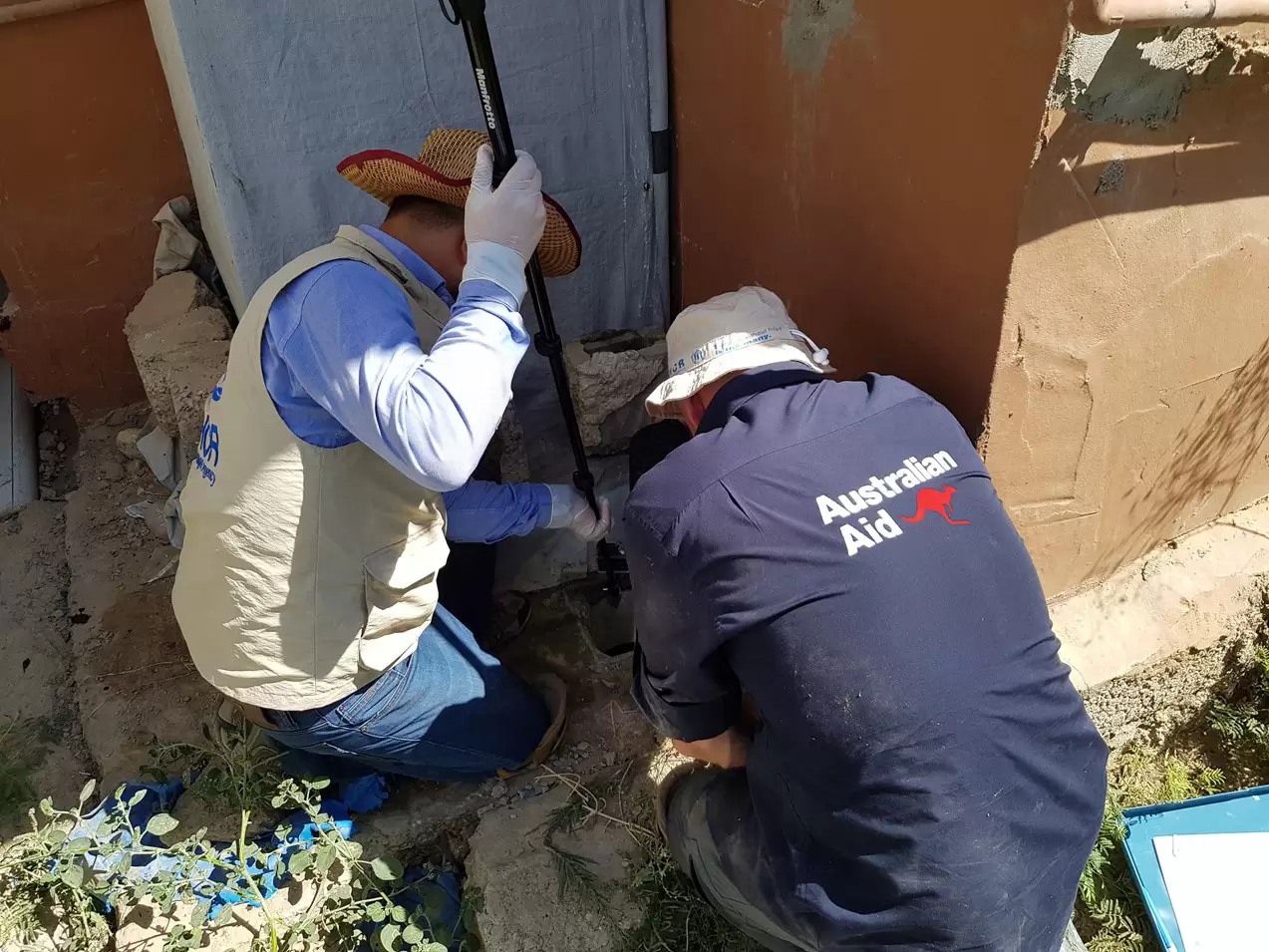The first World Engineering Day for Sustainable Development will be held 4 March 2020. To celebrate, we asked members of the profession how engineers can contribute to each of the 17 UN Sustainable Development Goals.
Goal 6: Clean Water and Sanitation
In 2018, engineer Martin O’Malley was deployed by RedR Australia as part of the Australia Assists program to Duhok, in Iraq’s Kurdistan Region. While there he was embedded into the United Nations High Commission for Refugees (UNHCR) as a Sanitation and Waste Water Specialist.
O’Malley doesn’t work in the most glamorous of fields, but it’s his work on water, sanitation and hygiene (WASH) infrastructure in Duhok, Iraq, that will bring long-term health and sanitation to thousands of refugees.
With over 20 years’ experience in WASH engineering, O’Malley is focused on a transition strategy for the camps’ emergency WASH infrastructure, which was implemented rapidly in the early emergency phase of the situation.
“The various engineers in the departments were delighted to see that UNHCR has brought on someone with experience in municipal systems, particularly the planning and financial considerations, which is experience that is lacking here. The confidence in my ability, considering the challenges, is a little daunting,” he said.
O’Malley is working to provide a more environmentally sustainable, long-term solution to improve the sanitation infrastructure for the population, which now spans over four camps, with a particular focus on the Domiz 1 camp, which in 2018 at the time of his deployment housed 42,000 refugees.
The camps are serviced by septic tanks that discharge into cesspits, or through a network of gravity pipes from shelters to a holding tank, which needs regular desludging.
“The septic tanks would be considered massively overloaded by Australian Standards, with up to 16 families connected to each,” O’Malley said.
“The desludged material is also currently being dumped at a hilltop, which then makes its way into the natural drainage and eventually into Mosul Dam, which is a major source of drinking water for large populations.”

Understanding the particular wastewater characteristics in the Domiz 1 camp was O’Malleys priority. This involved a condition assessment of tanks, measuring black water flows, and testing the black and greywater to understand the load of the material.
“The people in the camp receive between 60 and 100 litres [of water] per person per day, and so before we consider any type of treatment, we need to understand how this low volume of water affects the wastewater produced,” O’Malley said.
“Whatever the treatment selected, these components need to be fully understood to ensure the proper selection and sizing of options.”
Finding a way
Cost is also a major consideration – with UNHCR’s Iraq response just 17 per cent funded at the time, O’Malley’s strategy needed to be maintainable for the long-term health and sanitation of the camps’ populations while maintaining low operating costs.
“My preference is to create simpler solutions, like pond or reed bed solutions, where we can solve issues within the camps for a lower capital and operational cost,” he said.
“We can always upgrade these later when there is a greater financial ability to support other solutions.”
A success for Martin was his assistance in the design for the sanitation infrastructure of 154 new shelters in one of the camps, which will be semi-permanent structures.
The main achievement has been the modification of the design of the septic tank to incorporate internationally accepted standards in Septic Tanks and Onsite Domestic Wastewater, which O’Malley adapted from the Australia/New Zealand Standards.
“The upgraded design will help to improve the quality of the final effluent from the tank and thereby help to reduce the negative impacts on the immediate environment,” O’Malley said.
“This updated design for these shelters will be the one used by the local UNHCR WASH team in the area from now on.”
O’Malley was scheduled to remain in Iraq through November 2018 to see these efforts through. At the time, he said he was optimistic about the challenges ahead.
“It will be all about good coordination between different experts, clearly understanding the problem in its entirety and bringing others on the journey to get a financially and environmentally sustainable wastewater solution that looks after the people of the Duhok camps in the long term,” O’Malley said.
“I’m definitely up for the challenge.”
This article was adapted from a version on the RedR Australia website. Read the original here.
Ready to celebrate engineers building a more sustainable world?